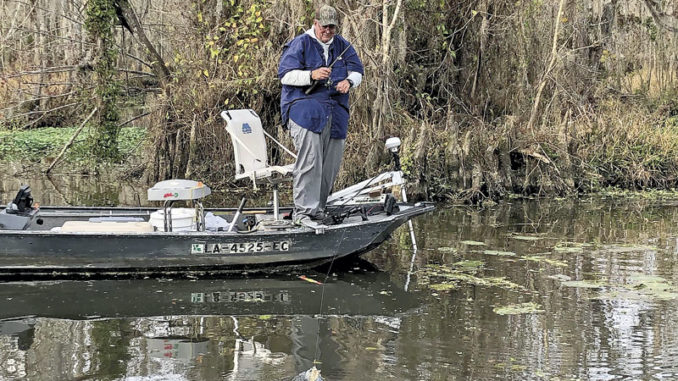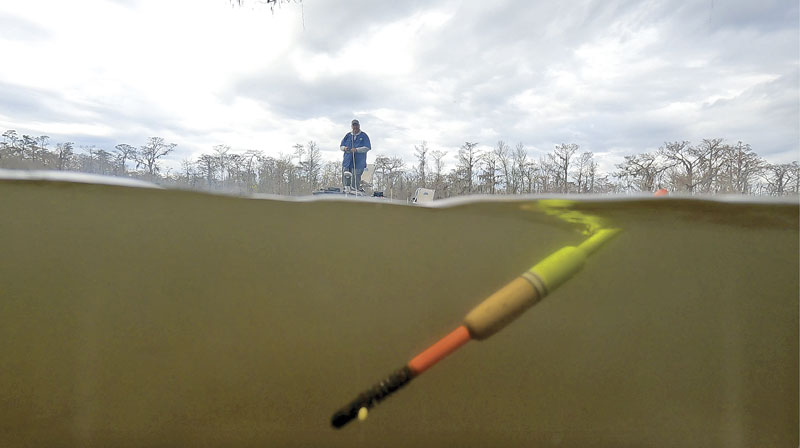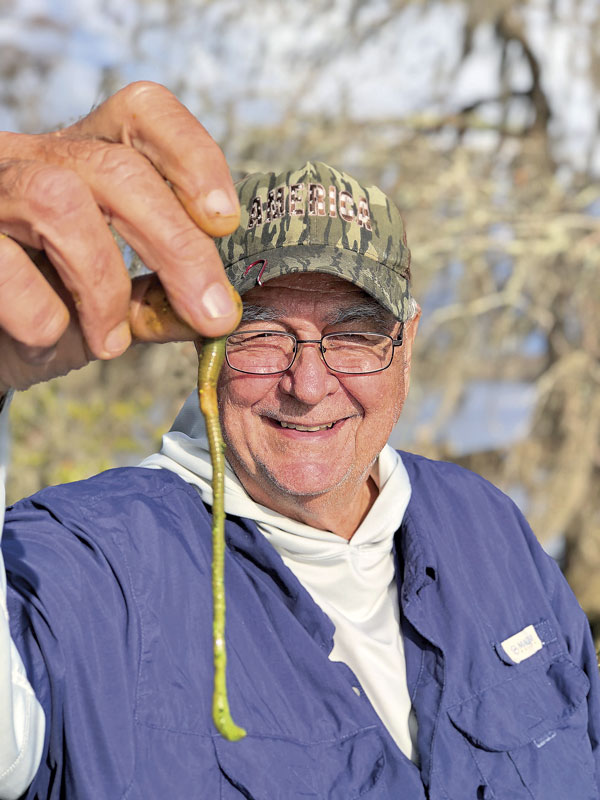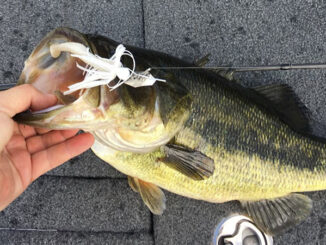
Trek to the river for a cooler full of big old chinquapin bream.
For most fisherman, a red and white bobber, freshly dug worms and a cane pole evoke memories of their earliest days of fishing.
Whether it was a neighborhood pond or a nearby creek, it’s probably safe to say that the majority of anglers got their start catching bream.
Ray Miller of Madisonville can recall a time when he was introduced to fishing as a young boy in Henderson.
“My dad would take the family down to Bayou Amy and that’s where I remember catching my first bream,” Miller said. “It wasn’t anything fancy, just some cane poles and worms that we dug out of the garden.”
Miller’s father was an avid rabbit hunter and kept beagles in the backyard.
“When he cleaned the kennel he would hose out all of the waste and it would drain into the garden,” Miller said. “Needless to say, that garden was loaded with earthworms.”
He recalls a time as a teen when he was invited to go fishing near Cow Island with John Louviere, who was a friend of the family.
“Mr. Louviere asked me to join him one day and I jumped at the invite,” Miller said. “We must have caught nearly 100 bream that day and that was all it took for me.”

Memorable trip
After that memorable trip, Miller was hooked and started fishing for bream every chance he could. Fast forward 60 years and he is still chasing bream, but he’s refined his strategy to target a certain type.
“For me nothing beats the chinquapin,” he said. Otherwise known as lake runners or shell crackers, chinquapin are at the top of the list for most perch jerkers who turn their catch into table fare, the reason being because of their girth.
“Chinquapin are thicker than any other sunfish,” he said. “I can fill my freezer faster with these filets as opposed to, let’s say, bluegill.”
The fish are not only thicker but grow larger than an average bream. To put it in perspective, the state record for a chinquapin is 2.88 pounds as opposed to the state record of 1.83 pounds for a bluegill.
Miller’s been fishing the Tchefuncte River for the past 20 years and has transformed his ability to catch these fish into a fine art. The Madisonville angler has been catching 35-50 fish on an average trip and said now is the time to target these delectable fish.

The spawn
Like most spawning bream chinquapin move into the shallows to lay their eggs in the spring. Miller said he waits for the water temperature to reach 65 degrees.
“If you can find a few days where the daytime highs are in the 80s, that’ll usually be enough to move them up into the shallows,” he said. “After that — it’s game on.”
Miller targets dead end canals and cuts where the current isn’t as strong.
“When these fish are spawning they’re looking for shallow, still water,” he said. “I like to look for cypress knees that mark the beginning of the shallow water. If there is more than 20 feet of water in between the cypress knees and the bank — that’s where they’ll be more often than not.”

Pencil cork
While a red and white bobber will do the job, Miller has graduated from the basics to a honed-in technique when fishing for chinquapin. He uses a pencil cork.
“I’ve found that there is nothing more sensitive than a pencil cork,” he said.
Pencil corks are slender and measure approximately six inches long. The benefit to using these corks is ability to detect even the most subtle bite.
“With a normal cork I usually wait for it to shoot under before setting the hook, but with a pencil cork, when I see the slightest tap I’m setting the hook!” Miller said.
The 72-year-old adds that pencil corks have come a long way since he first started using them.
“I can remember my first pencil cork was made from a porcupine quill,” he laughed.

Green worms
Admittedly, it’s been a while since Miller has picked up a shovel to dig worms, but through the years he’s found something far superior to the common earthworm.
“I’ve fished for chinquapin for over 60 years and in my opinion there is no better bait than green worms,” he said.
It turns out that this resourceful angler has found a way to add a little color to what was thought of as an unimprovable bait. Miller starts with a small container of night crawlers and adds a tablespoon of a nutrient called Worm-Glo, a non-toxic worm food that the worms eat and ingest.
“I throw a tablespoon of this stuff into the container of worms three days before I go fishing and when it’s time to use them, the worms are bright florescent green,” he said.
In addition to fishing advice the wise cajun felt it necessary to dole out marriage advice.
“Never keep the night crawlers in the kitchen refrigerator!” he said. “I made the mistake of keeping the worms next to the leftovers one time and I had to sleep on the couch that night.”
Pinch a piece
When baiting his hook, Miller pinches off a 1-inch section of the worm and threads it on to a No. 6 cricket hook.
“It’s important not to use too big a piece because those chinquapin will rip it right off the hook,” he warned.
Since chinquapin aren’t isolated and are often scattered among other bream, Miller recommends rigging the hook slightly deeper than normal since chinquapin are often found along the bottom, rather than suspended.
As the spawn heats up in March, Miller reminds fishermen that paying attention to the moon phases will help put more fish in the boat this spring.
“I find they are the most active during the full moon,” he said. “If you fish three days before and three days after a full moon, that’s when you’ll do the best.”
